This one, blaunchyd porray or creamed leeks, is from a book called the Liber Cure Cocorum, which is completely wonderful for three reasons:
- It comes from Lancashire and is in the Northern dialect current around 1430.
- It includes the earliest references to haggis and humble pie.
- And, awesomely, it’s in verse form:
For blaunchyd porray.
Take thykke mylke of almondes dere
And heke hedes þou take with stalk in fere,
Þat is in peses þou stryke.
Put alle in pot, alye hit ilyke
With a lytel floure, and serve hit þenne
Wele soþun, in sale, before gode menne.
Like I said. AWESOME. It must be this way as a form of mnemonic in the face of widespread illiteracy – there is evidence that many pre-literate societies just didn’t muddle along helplessly, but instead used a strong and structured delivery for their oral knowledge, which they could then reel off when required. One of the strategies for that delivery is verse.
Obviously, during Lent or other fast days, you could substitute thick almond milk for the cream. Hieatt and Butler suggest a halfway house for modern cooks that combines almond milk and cream, and this is what I’ve used here.
To make the creamed leeks, you’ll need the following:
- 4 tbsp ground almonds (more flavourful if you grind them yourself, if you have the patience)
- 475ml light cream or whole milk
- 2 large leeks, washed, trimmed, and sliced into thin disks
- 1-2 slices of white bread, crusts removed, and torn into fragments
- 1 tsp salt
Start by chopping up your leeks:
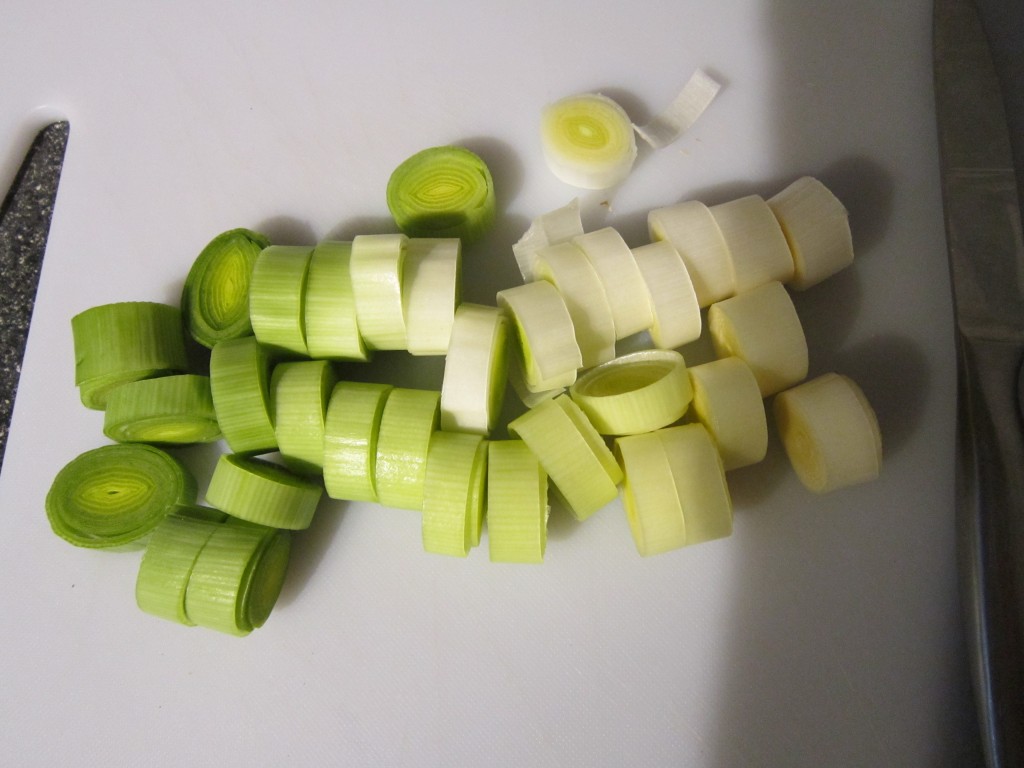
Mix the almonds and cream/milk together and leave them for an hour. I just left them in the saucepan. You’re going to be boiling the leeks in this liquid.
Next, tear your bread into breadcrumbs. Note that you don’t want stale bread here – you’ll be using the crumbs to thicken the sauce so a kind of elasticky dampness is okay.
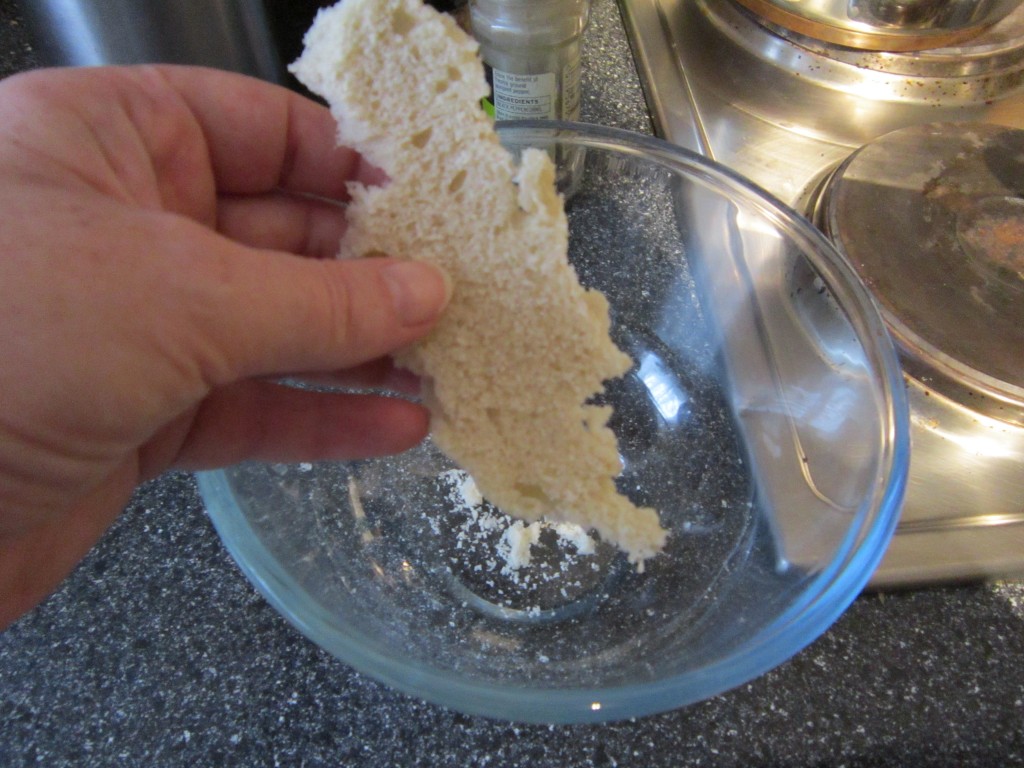
When the almond/cream mixture is ready, strain out the almonds with some muslin.
Soak the breadcrumbs into the liquid and give it all a good stir until they practically dissolve. The recipe says blend it, but I managed very well with a whisk (this is why it’s good to have fresh bread!)
Turn on the heat to medium and bring the sauce to the boil. Keep stirring it all the while, as the bread will start to thicken the sauce to a remarkable degree.
When it’s getting noticeable thicker, chuck in your leeks and the salt.
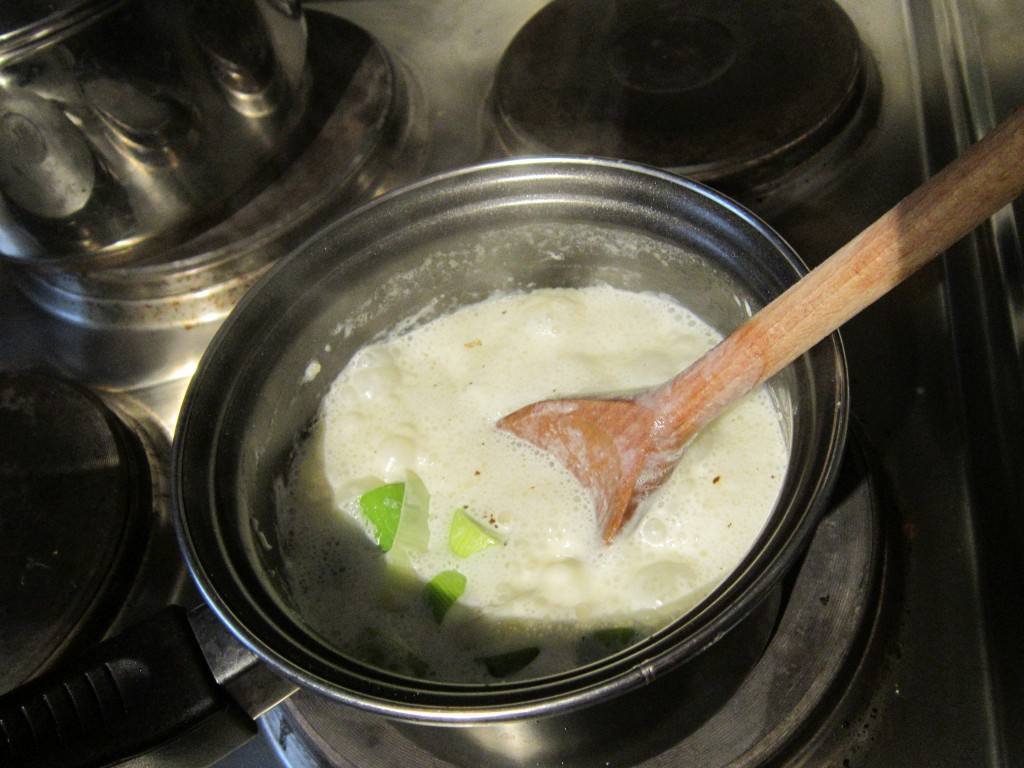
Let them simmer gently for 5 – 10 minutes. What you’ll end up with is a soft, velvety concoction, fairly stiff, that you can then go and serve alongside your other medieval delights, such as Cormarye in my case.
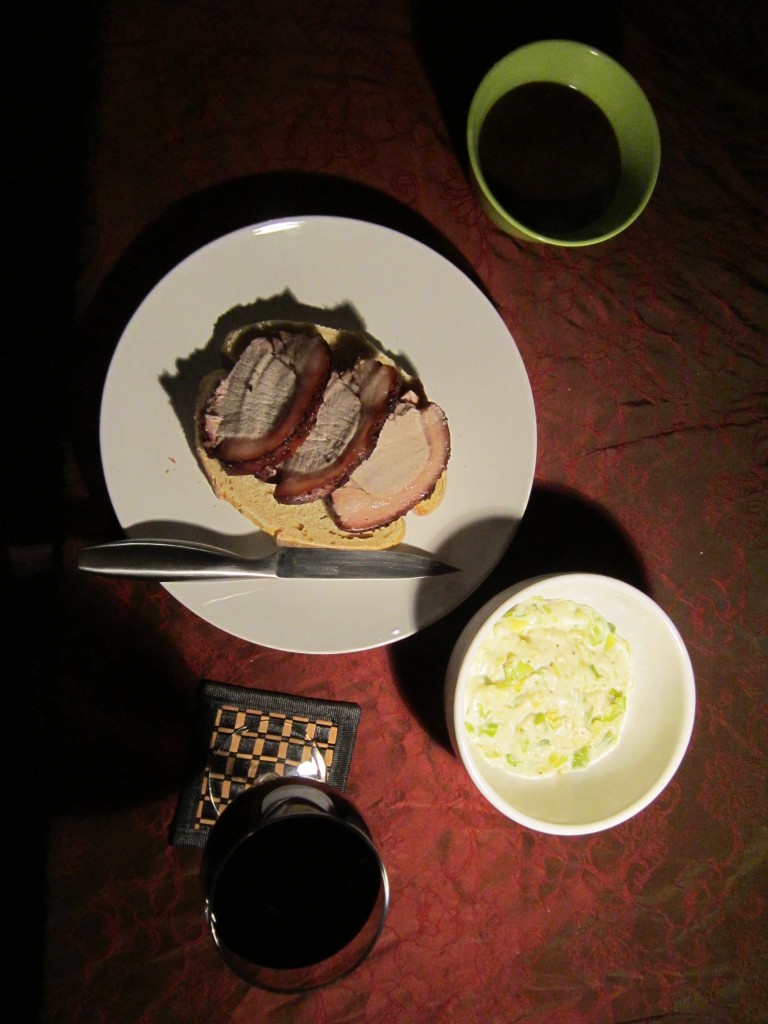
Or you could eat it with practically anything else, because it’s absolutely delicious. A dish of creamed leeks – what’s not to love?
Was it nice?
It looked beautiful and tasted great. I was initially skeptical about the breadcrumb thickener, but ended up completely sold. It wasn’t at all lumpy or grainy, and the almonds gave the whole thing this wonderfully sophisticated sweet edge. If you were using pre-made almond milk, the whole thing would be ridiculously easy to prepare, too.
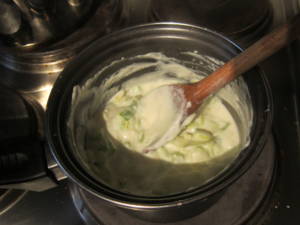

‘Put alle in pot’ – that’s my kind of cooking.
Hell yeah!
Do you discard the almonds after they’ve been strained from the cream?
On this occasion I believe I did. You can strain the almonds multiple times for a thicker milk though.
You say you were skeptical about using breadcrumbs to thicken the sauce. It’s the most common thickener in Spanish cooking, a remnant of old cooking that is still used today.
For example, there’s the Andalusian recipe salmorejo, a cold tomato soup, similar to gazpacho. Gazpacho is chunky but salmorejo has the same ingredients blended to a creamy consistency & thickened with bread.
Ajo blanco is another cold soup, made with garlic (ajo), almond & bread, topped with fruit, usually green grapes. it’s best of you make it then store it in the fridge for a day to let the flavour develop, addig the fruit just before serving.
In fact many soups, especially those from Andalusia, are thickened wth breadcrumbs. I much prefer it to using cornflour or a roux, because it’s easier (no need to cook the roux to get rid of the flour taste), no need to make a liquid with cold water before adding, you simply add the bread crumbs straight to the soup.